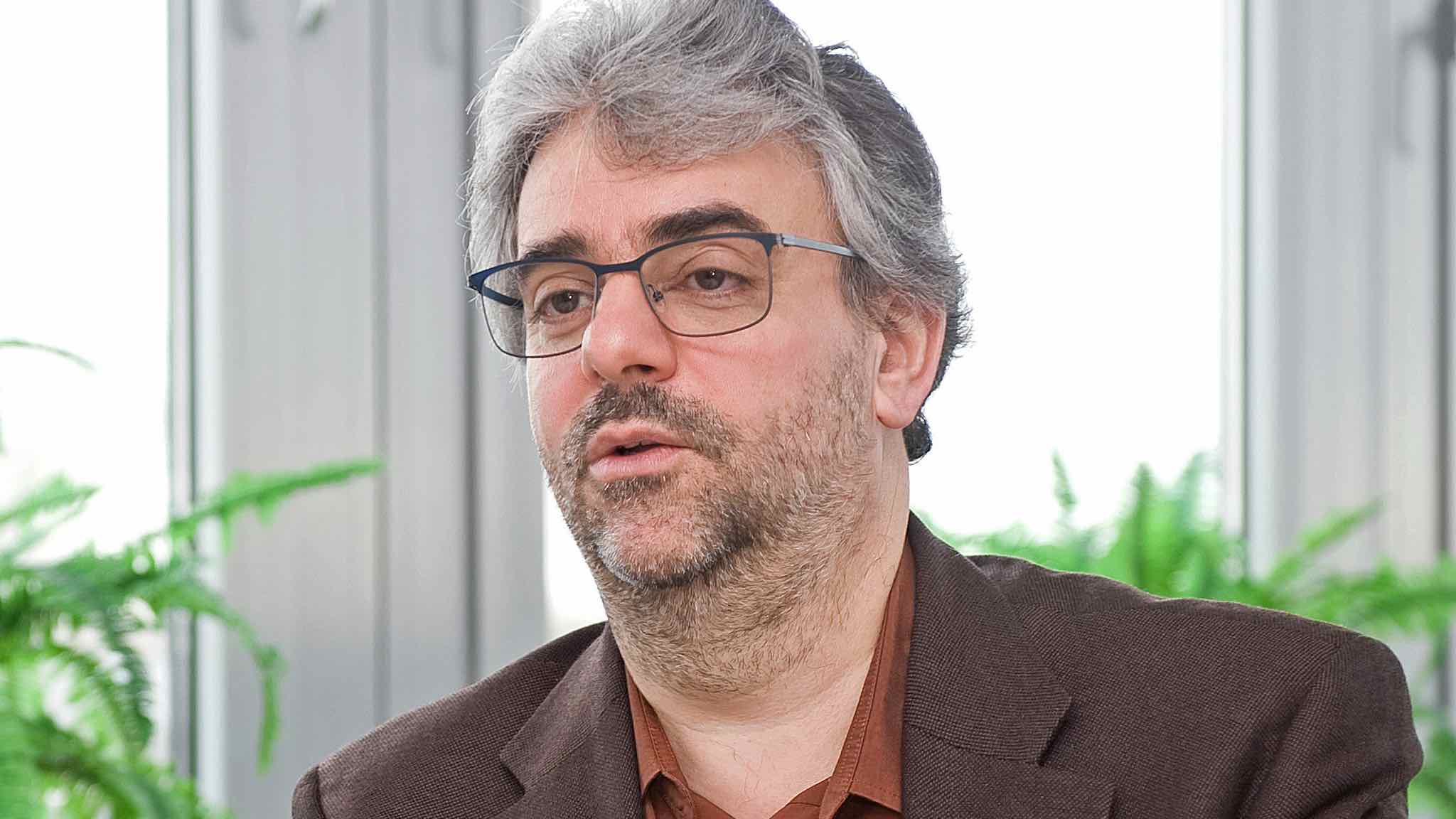
“If We Don’t Change Anything It Will Lead to a Catastrophe.”
Professor Heinz Rothgang about the crisis in long-term care
The renowned health researcher and health economist, Professor Heinz Rothgang, views the hiring of specialists from Eastern Europe as lacking in solidarity. He also doesn’t view robots as the answer. Digitalization will, however, ease the documentation of long-term care. Together with his team and partners, Rothgang is now working on a scientifically-based personnel assessment procedure for in-patient care.
Professor Rothgang, we are increasingly hearing the term “long-term care crisis” – is this scaremongering or a real problem?
There is, indeed, a crisis in long-term care and this in more than one sense. Firstly, we don’t have enough care workers in long-term care to fill the current vacancies. In 2017, in long-term care alone, 23,000 vacancies for specialists weren’t filled. If you add this to the 8,000 vacancies for nursing home assistants and helpers you have more than 30,000. One of the reasons for the shortage of care specialists is the fact that many leave the profession prematurely. Surveys such as “Nurses Early Exit Studie” show that the main reason why people leave the profession is that care workers do not perceive the working conditions as being suitable for the provision of adequate care. As the people who work in long-term care are very committed, they then often turn their backs on the profession. The filling of these vacancies is then a very arduous business which takes an average of six months instead of four weeks for other branches.
What does the future look like?
Model calculations show that we need to reckon with an increase of 80 per cent in the number of people requiring care in the four decades from 2015 to the 2050s. At the same time, the number of people able to work will drop by 20 to 30 percent due to demographic change. We would need to double the number of people working in long-term care just to maintain the current status and care ratio. If nothing changes there will already be an employee shortage of 350,000 by 2030. This takes all employees in long-term care into consideration, not only care specialists. This figure is based on full-time equivalents. However, as many people in this this profession only work part-time, we are talking of a shortage of half a million people here, already in 2030. If we don’t change anything it will lead to a catastrophe.
“If nothing changes there will already be a shortage of 350,000 employees in long-term care by 2030.”
Are care workers from abroad the answer?
The problem won’t be solved if we “steal” the well-trained care specialists from Eastern European countries. Demographic ageing isn’t as pronounced there as here yet but this will change. There is a shortage of care workers in almost all EU countries. I took part in a so-called “Joint Action” of the EU on this subject as the German representative. Representatives from more than 28 countries took part in this and all complained of a lack of care specialists. It is therefore lacking in solidarity within Europe if the East trains the specialists and they then go to work in the West. We should at least assume a share of the training costs. If we look beyond eastern Europe to Asia, we should bear in mind that China is the fastest ageing country in the world. Japan already introduced a long-term care insurance in 2000, Korea followed in 2008. In the mid to long-term we are therefore competing with these countries for care workers. If we hire such employees from abroad this can only solve the problem in the short to mid-term. In the long-term, though, we need to train the employees we need ourselves and ensure they remain in the profession.
“The problem won’t be solved if we ‘steal’ the well-trained care specialists from Eastern European countries.”
The federal government wants to increase its efforts to hire care workers from the EU. How do you rate their language qualifications?
This is another problem. We promote a biography-orientated care whereby the history and experiences of those concerned are taken into consideration. For this we require specialists with knowledge and empathy who are able to come into contact with elderly people and those suffering from dementia and for this they need to be able to speak their language. Even if foreign care workers take language classes before they work in Germany, it will not be sufficient to be able to communicate with the patients on this level.
What possibilities do you, as expert, see for maintaining the quality of the care?
One opportunity is digitalization which will considerably ease workflow management, in particular. The masses of paper documentation which are created in the various facilities aren’t usually used for care processes and are therefore pointless. It does, however, involve using the documented information as a tool for process control and quality assurance. With the change in the generations we will have young, new care workers who will be socialized with digitalization and it will then become easier for everyone to use this potential.
What about the personnel mix?
In association with my team and partners from the university we are developing a scientifically-based personnel assessment procedure for in-patient care which set out joint self-administration in care in the realization of a statutory mandate. That’s a huge project and we will, as a result, present a procedure which determines the number of specialist employees which are needed depending on a facility’s residents and hereby we’ll differentiate between specialists and assistant workers. This will result in “specialist staff quotas” specific for the respective facilities which will replace the uniform 50 per cent specialist quota which was valid until now. This current quota was simply decided at some point. However, we may see that we can achieve the same result with another mix ratio – for example, many more employees even if the number of specialists decreases. This is what we want to find out.
Wouldn’t it be most effective to improve pay in long-term care and therefore make the vacancies more appealing?
This is, indeed, one of the declared goals of politics but it’s hard to implement. For those leaving the profession the reason lies mainly in the working conditions. In contrast, in the choice of career, the pay plays a bigger role. Young men, in particular, look more at the pay and we are also seeking and need male care staff. Employees in long-term care work for the elderly earn an average of 600 euros less than those working in health care. If we now introduce the general training with the new care profession law, all trainees will be taught together for at least two years and can then work in long-term care as well as health care. Where do you think they will then go considering these pay differences? Care for the elderly therefore needs to catch up with regard to pay. However, the pay scales are complicated in this branch. Charity and welfare organizations have their own set of rules and the private providers have, if anything, mainly company contracts. It’s a pay scale jungle, so to speak, which makes it very difficult to declare one collective agreement as generally binding. The collective agreement act would probably have to be changed for this.
“The attempt to use robots in care is of ten still very technically driven.”
A further suggestion for solving the shortage of professionals in elderly care is the increased use of robots – what do you think about this?
That is real hype. For a few years, a robot called Paro has, for example, been used which looks like a cuddly baby seal and actually works quite well. People with dementia become calmer when they hold him in their arms. This is better than calming someone by medication. However, human contact would probably be even better. Pepper is also well known – a robot which has been programmed to analyze human facial expressions and gestures and respond accordingly. However, so far, the possible areas of use of such interactive robots have been very limited. Up until now, they have been mainly used for entertainment or memory training in research projects and, at the moment, only very minimally help ease the workload in care. The use of robots in social care ultimately means that interpersonal interaction is being replaced by robots. Do we really want this in long-term care? I don’t think so and according to current research there is still a long way to go. The attempt to use robots in care is often still very technically driven. Although there may be potential in the use of robots, I do, ultimately, still believe that long-term care has a great deal to do with interpersonal exchange and we should maintain this. \
Profile

Professor Heinz Rothgang is a health researcher and health economist. What does the latter involve? “The health industry is a huge economic factor,” says the scientist. “Six million people work in this sector in Germany and generate ten per cent of the gross national product.” This is more than in the automobile industry. He describes his subject as, “the application of economic thought to the health and care sector.”
Rothgang has been the Director of the Health, Long-term Care and Pensions Department at the SOCIUM Research Center for Inequality and Social Policy (Center for Social Policy ZeS until 2015) since 2006. Alongside his research and teaching, Rothgang is also in various high-level committees. He spent ten years, for example, in the advisory committee for the review, elaboration and introduction of the new definition of care dependency which was established in long-term care insurance in the Second Act on Strengthening Long-Term Care.